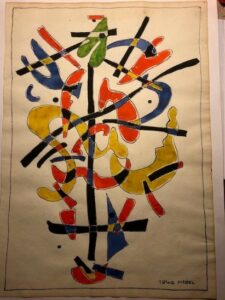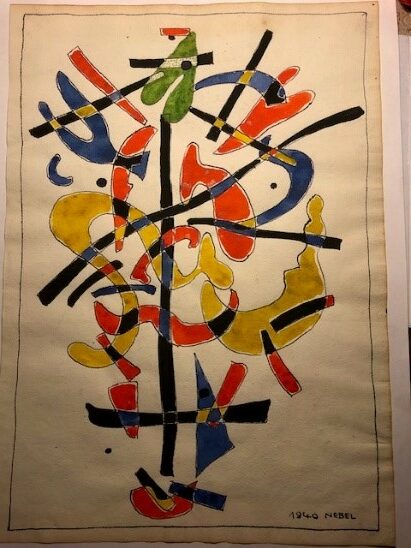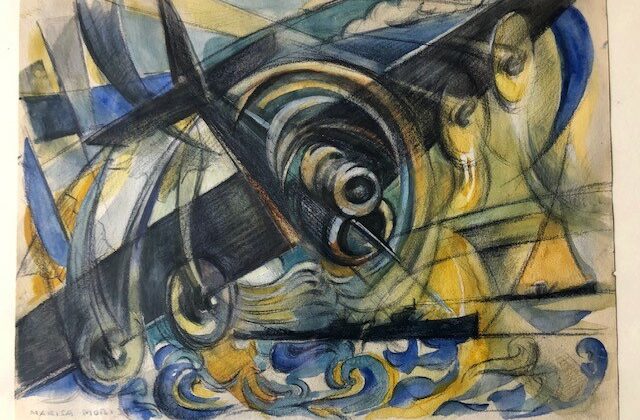Otto Nebel and his runic flags
Prof. Francesco Carelli

Otto Nebel (1892 – 1973) was a German painter born in Berlin. In 1919, in Berlin, he became friend with Wassily Kandinsky, Paul Klee, Georg Muche, Kurt Schwitters, and their art. In 1933, when the National Socialists disparaged his work as degenerate art, he left Germany for Switzerland. Nebel had financial problems because he was not allowed to work in Switzerland. Thanks to the effort of Kandinsky, he could regularly sell some of his paintings to the Solomon R. Guggenheim Foundation between 1936 and 1951. The German Federal Republic awarded Nebel the Order of Merit of the Federal Republic of Germany in 1965.
His view was that painting should be purely non-figurative. The notion that the revolution of modern art could also lead to a wished-for transformation of society linked to other avant-garde groups of artists and writers. Even if the group did not stay together long, the ideas it pursued remained fundamental for Nebel’s work.
His Runen-Fahnen (“Runic Flags”) are optical scores that visualize the interplay between individual letters of the alphabet and their various facets. Analogous to the fugue in music, in the runic fugues the vowels and the consonants chosen at the beginning determine the “theme”, which is continually repeated and transformed by expansion, reduction, and inversion. Nebel’s goal in reduction and concentration of linguistic material was to create a contrasting language to hackneyed everyday language and its rational use.
Nebel understood characters or runes as independent linguistic entities whose sound or acoustic and visual dimensions were the key part of an artwork. The runic fugues, however, represent an experimental search for the “inner sound” (Kandinsky) of words and letters, their impact on the emotions.
The artist reworded them later into collages of paper cuttings, making extremely short poems. These works underscore the parity between word and image in his work, between literary and visual forms of expression. The artist commented on his colourful drawings from this period in the following words: “The strangeness of the composition is to be understood humorously. The images are such that belong in children’s souls”.
Abstraction and the non-objective In Paris, Nebel had contact to the cosmopolitan group Abstraction-Création. The drawings optically resemble Arabic or Cyrillic characters and, to a great extent, are executed on gray or black “imperial-quality paper”. Nebel considered them to be visual runic narratives that were closely related to his literary texts. In 1929 he executed four portfolio artworks. They were conceived as a crossover between text and image, whereby the image was mostly created first, and the text subsequently captured thoughts and observations on the respective work. The initial outlines in pen or pencil are partially visible under the coloured pencil drawing.




